Ningaloo Total Solar Eclipse

April 20th 2023
Ningaloo Total Solar Eclipse

April 20th 2023
To document any Total Solar Eclipse many photographic equipment choices needed to be made.
Go small aperture, light weight and portable?....
...as the vast majority of eclipse chasing photographers sensibly do
or
perhaps something larger?
In this case, whether to employ my treasured, 155mm aperture, oil-spaced APO triplet,
made by
the legendary instrument maker Roland Christen at Astro-Physics, USA.
Oil-spaced means the internal lenses are physically coupled by an oil film.
The surfaces have less relative change in index of refraction,
respond more quickly to temperature changes
plus there aren't any internal reflections due air/glass surfaces between the lens elements.
No stray reflections from the intensly bright solar photosphere
is a BIG plus
for solar eclipse imagers.
But, larger telescopes also need large telescope mounts,
plus
heavy counterweights and rigid tripods, none of
which are airline overhead locker compatible.
The nagging question was: if not now, when would I next be able
to park a 155mm APO refractor under the shadow of the moon?
So I convinced my beautiful wife, we loaded up the SUV and headed west.
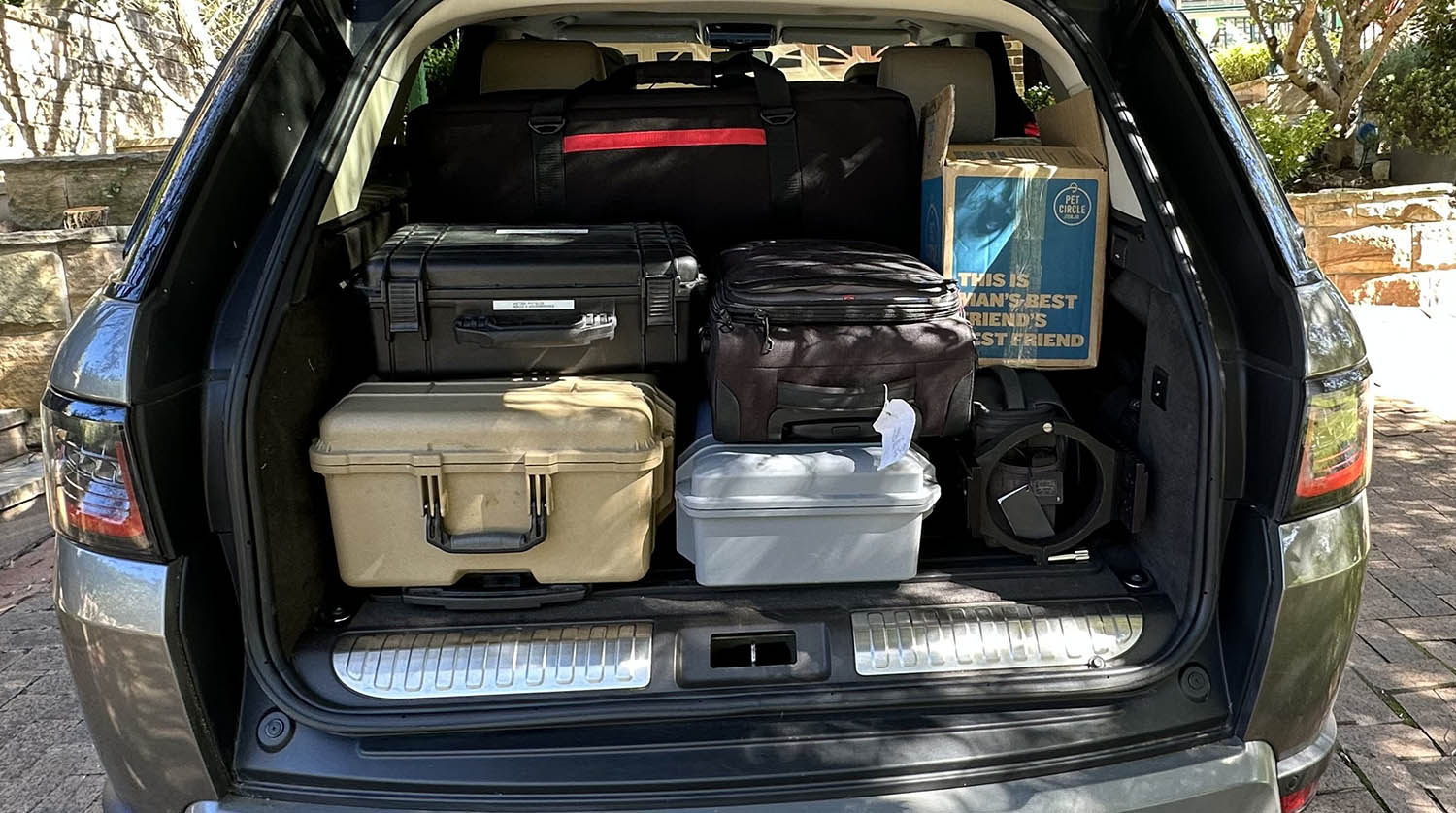
Above: Just the 'scope gear
Socks and undies etc. were relegated to the back seats
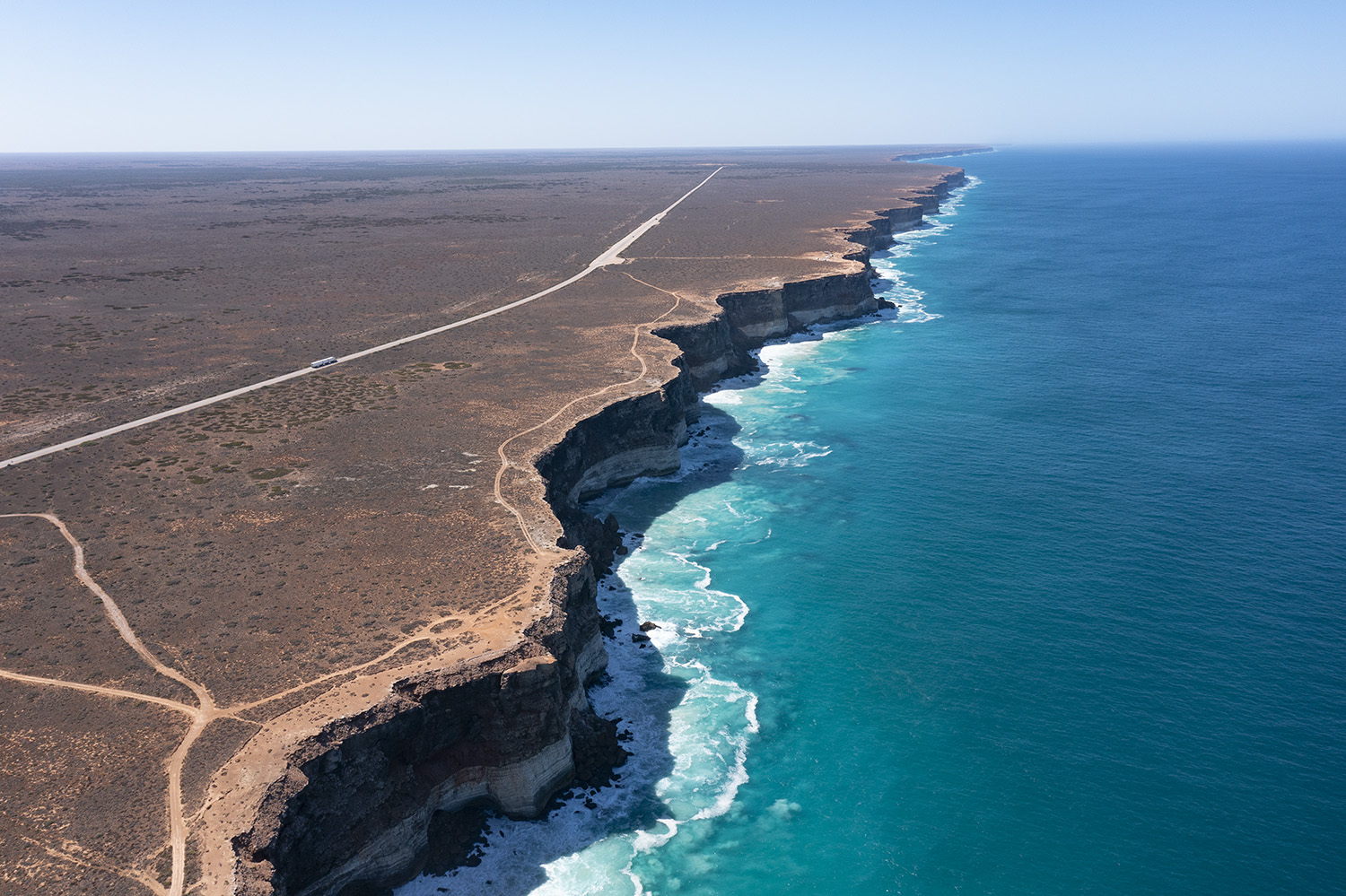
(above DJI Mavic 2 Pro )
Approximately half way to Exmouth from Sydney, we stopped to take in the view of the Great Australian Bight.
The cliff line stretches for over 200 kilometres with an average sheer drop of 200 feet/ 80 metres into the Southern Ocean.
Truly spectacular!
The wider section of the Eyre Highway (visible top centre) is one of many highway sections
used by Royal Flying Doctor aircraft as an emergency landing strip.
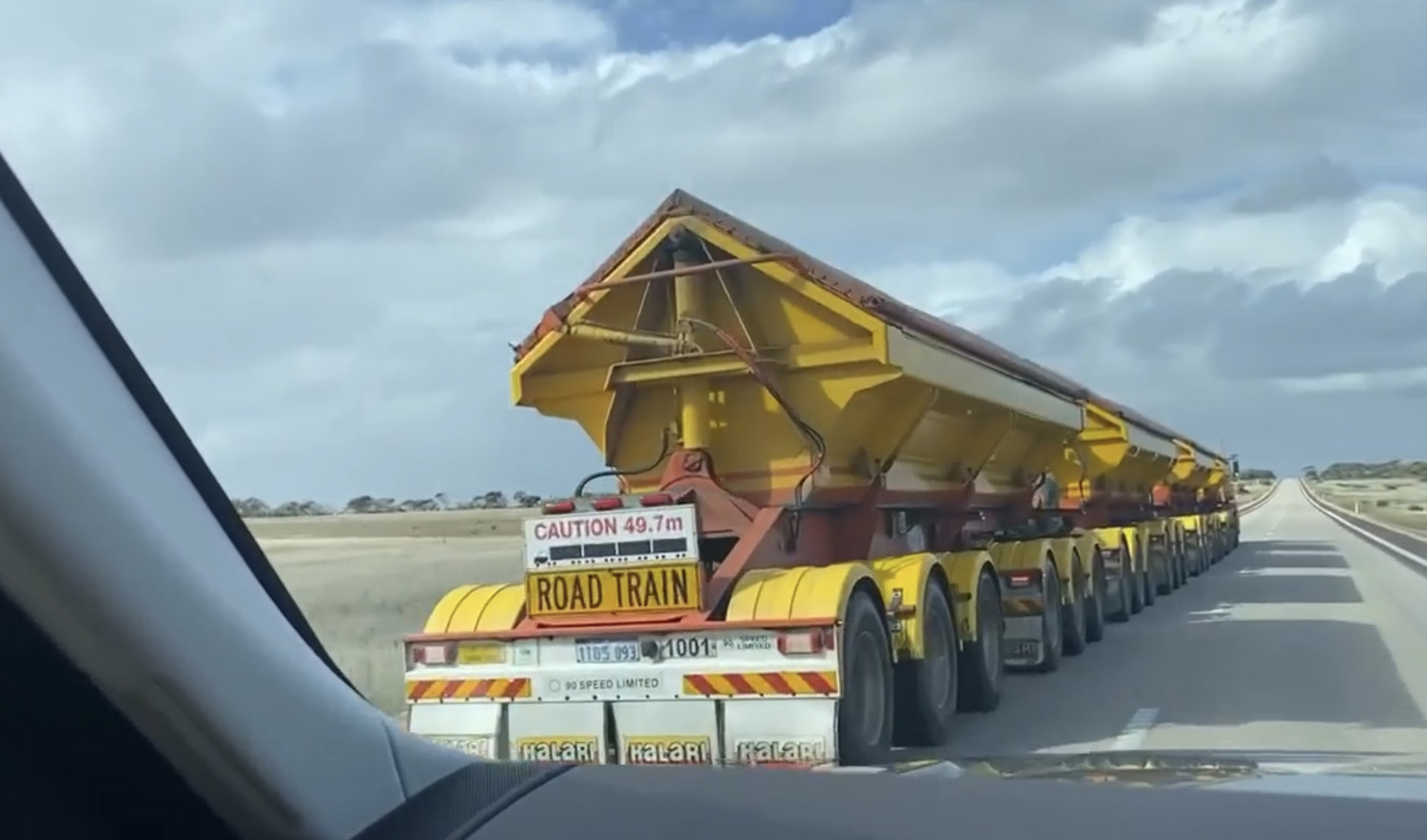
Above: one of the many road trains that we had to deal with on the Ayre Highway (image credit L. Ward)
This particularly impressive four trailer rig took a little while to get around....all 49.7 metres or 163 feet of it! ...and does
beg the question why on earth are these massive rigs mixing with cars/caravans/buses on Australian highways?
Rail would surely be a safer and more environmentally friendly option to move freight across our wide nation.
That's assuming such rail lines were a nation building priority in the first place. Duh.
The weather in Exmouth was also a concern.
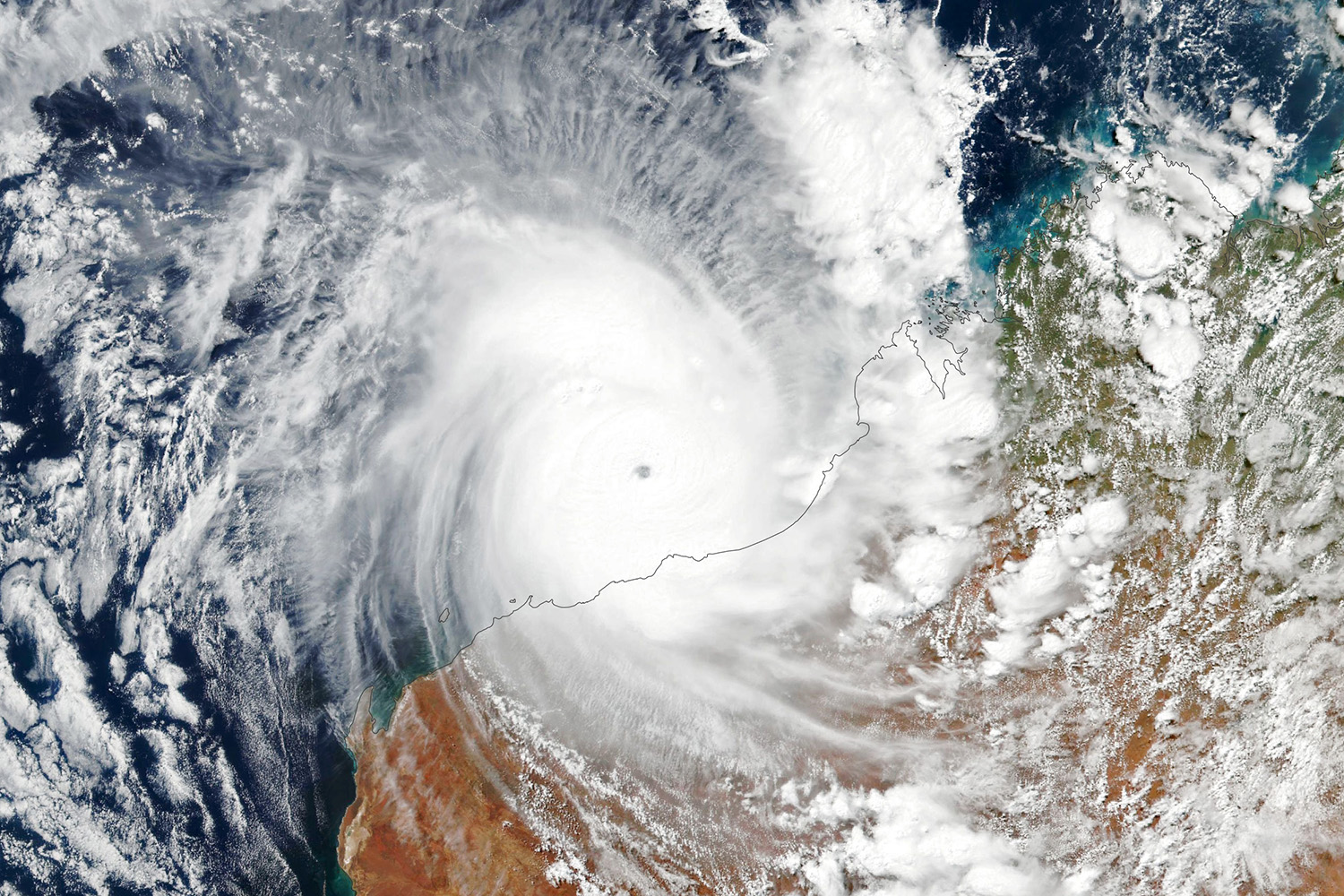
About a week before our arrival a Category 5 cyclone Isla (NASA image above)
passed across the north western Australian coastline
which certainly cuased us some angst. Thankfully it did not linger and
evolved into a rain bearing depression inland.
The resuting south easterly airflow from this system produced pristine blue skies at Exmouth for the eclipse.
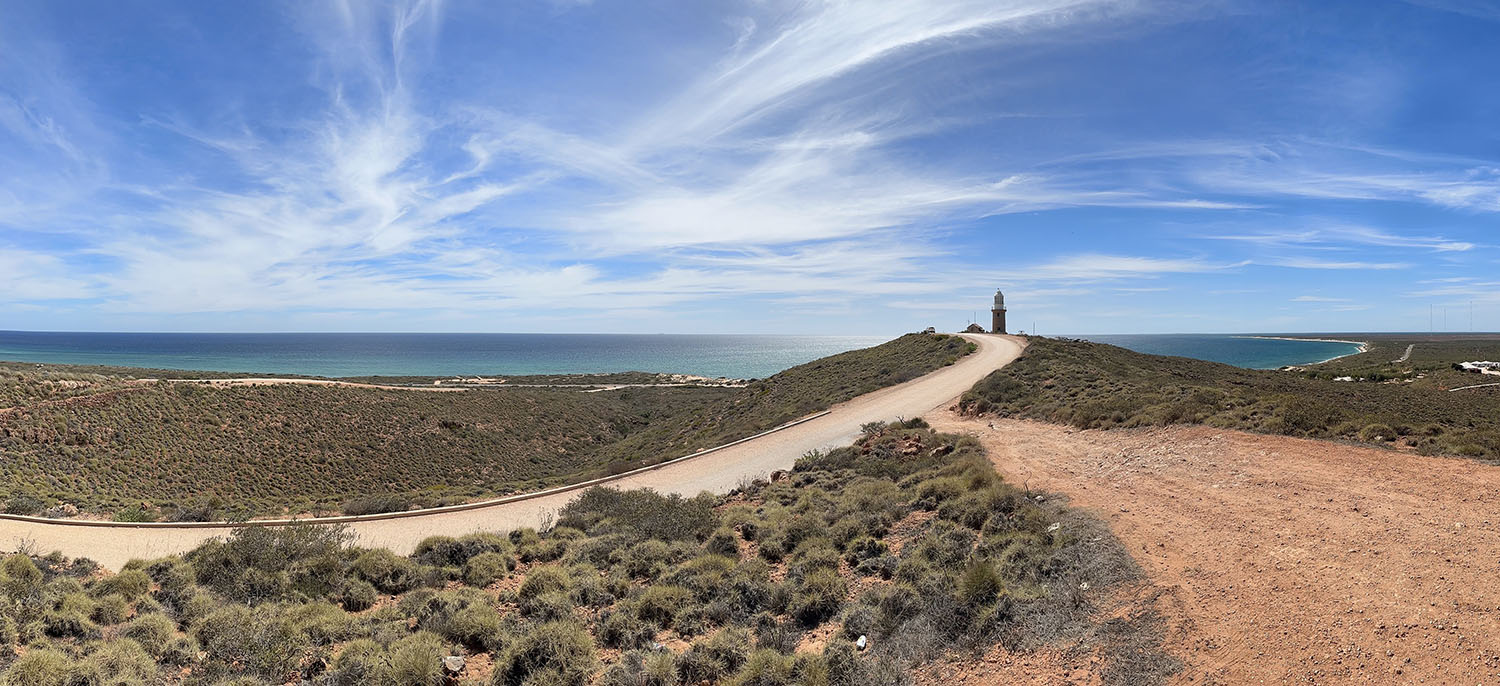
Above: Journey's end!
Shortly after arriving in Exmouth we visited Vlamingh Head lighthouse, located 17km from the town.
It is one of the few locations in Australia where sunrise and sunset
can be seen over the ocean. It was named after Dutch cartographer
Willem de Vlamingh who first charted the headland in 1696.
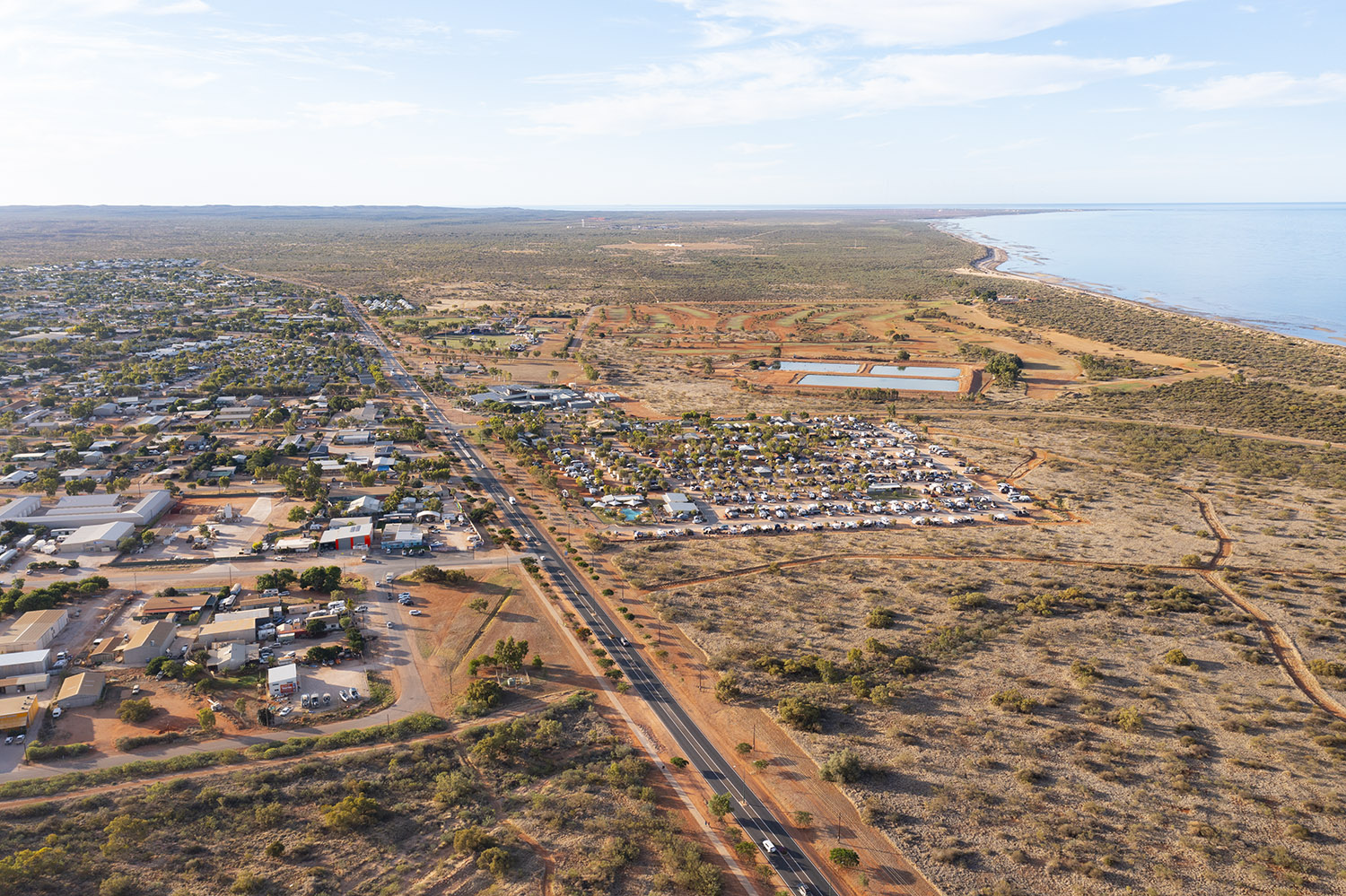
Above and below: the tiny hamlet of Exmouth (Mavic 2 Pro )

WA bureaucrats spent $A22 million on temporary road closures,
hundreds of frustratingly low temporary speed limit signs,
national park access closures, and a very extensive police presence.
The "authorities" were apparently expecting another 50,000 motorcycle gang members,
or possibly Russian paratroopers to descend on the town. They really didn't have a clue.
Police seen here issuing a ticket for a lone biker for carrying
an unlicensed Tasco Telescope and sawn-off Unitron.
( image credit unknown....and yes, I am having a joke at their expense about the Tasco etc. )
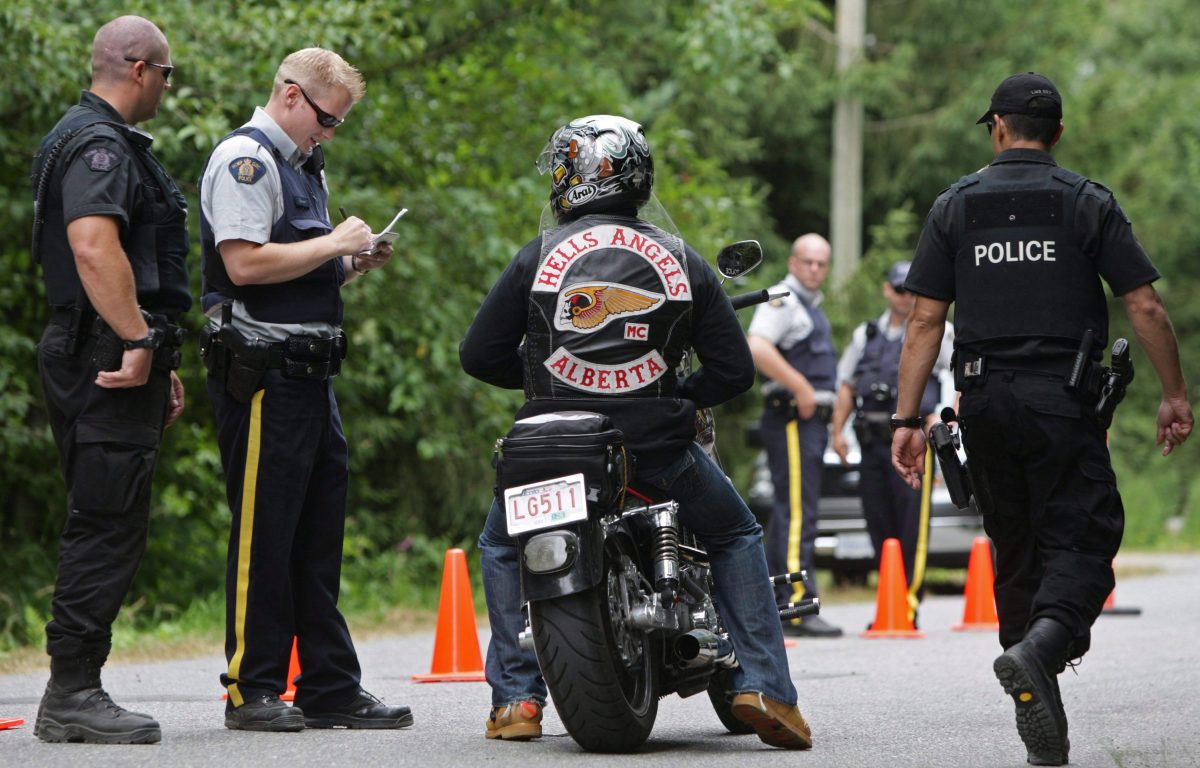
In reality about 12,000 people, from across the globe, were remarkably pleasant and well behaved
had traveled to the region for the eclipse. Many stayed at Coral Bay and similar locations.
Exmouth is normally known for its pristine coastline and sea life,
in particular whale-shark dives
that allow you to view these
magnificent creatures as they migrate relatively close to the Ningaloo shoreline.
(below: Whale Shark image taken during our first visit to Ningaloo in 2016
....also when we got some stange looks while asking to book accommodation in April 2023.
The receptionist had no idea. "Trust me" I said, "it will get quite busy then
!
" )
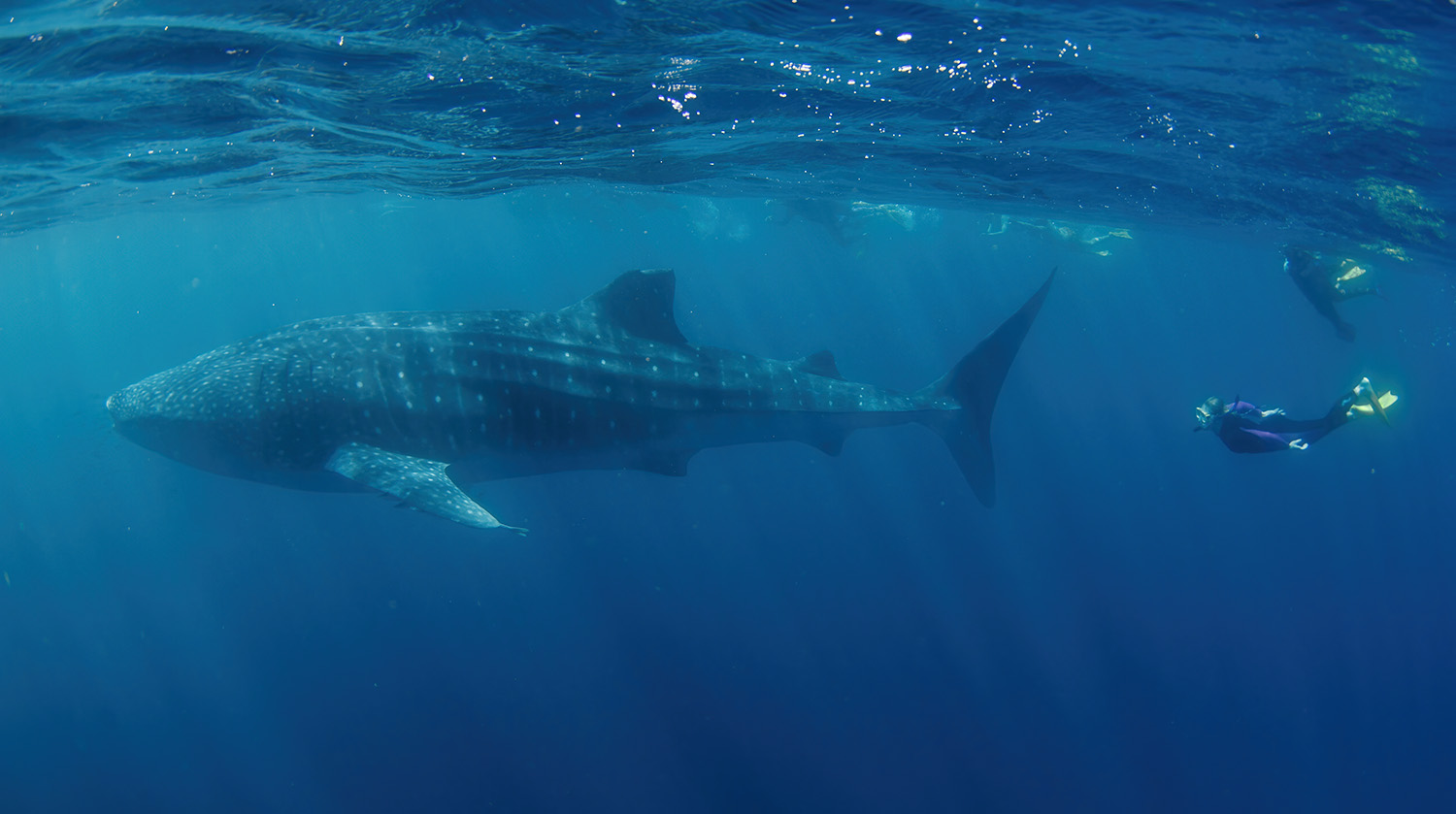
A number of eclipse chasers were directed to a particularly lush oasis/camping overflow area
(pictured below, Mavic 2 Pro) also generously provided by the West Australian authorities.
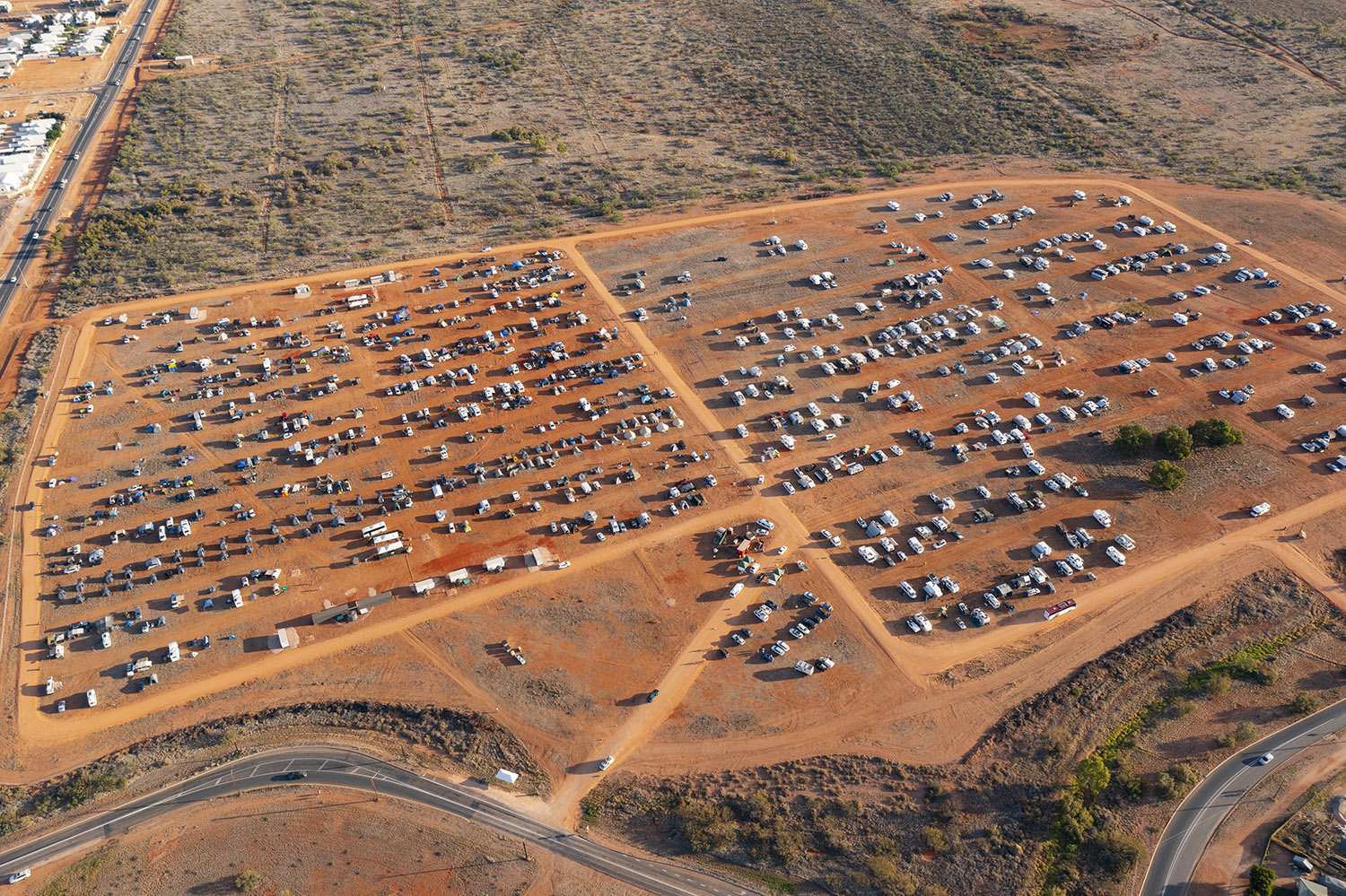
Thankfully we had booked a room at the Exmouth Escape Resort several years earlier.
The return trip took 23 days and covered 12,081 km and
consumed about $A1800 of fuel.
It resulted in one cracked (thankfully insured) windscreen,
four WA police brethalyser stops.... mostly at 9.00am
Perhaps "hair of the dog" is a probem in WA?
Plus one iPhone charger
left behind in a motel room....maybe Kalgoorlie?
Was it worth it? Absolutely!
Eclipse results below......
Above, the Moon slowly edges across the Sun. (EOSR5, AP155 Baader Solar film)

Above: The last of the solar photosphere about to be totally masked by the moon.
SIngle image. EOSR5 + AP155
Note: the sheer lack of internal reflections or scattering/spikes from the
ultra smooth Astro-Physics AP155 optics.
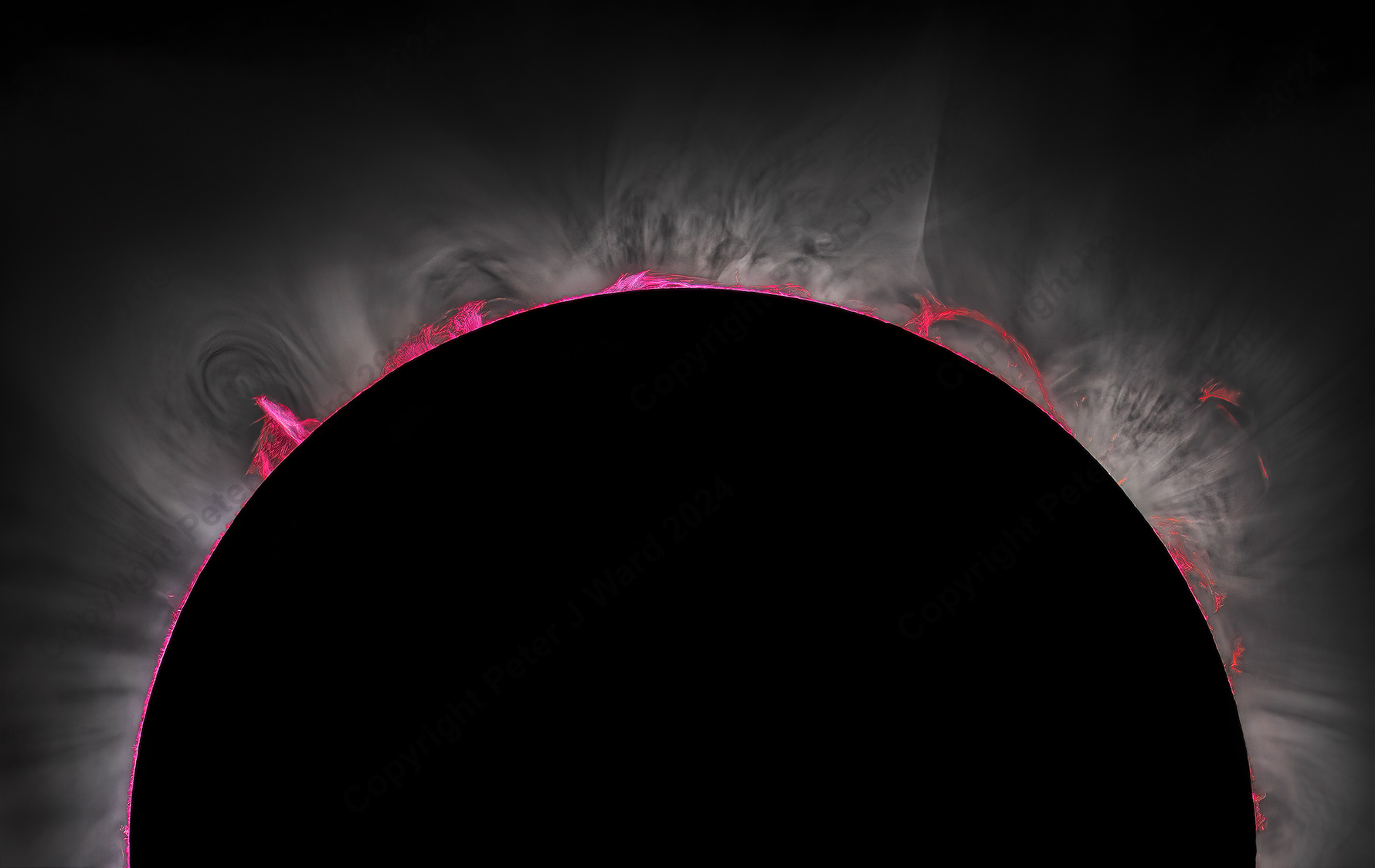
Above: The chromosphere taken with the AP155
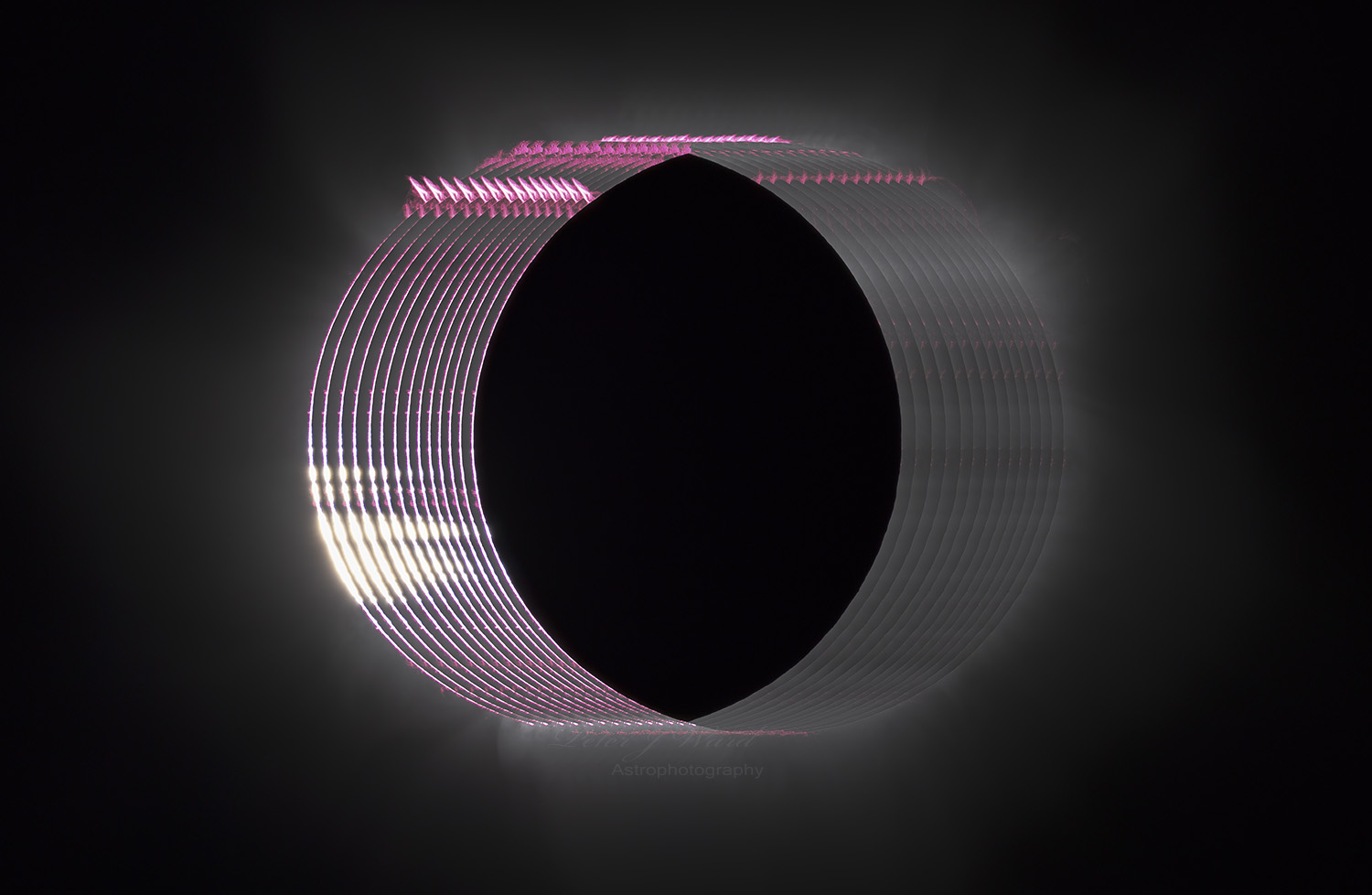
Above Baily's beads and a bright chromosphere were hallmarks
of the 2023 Total Solar Eclipse (AP155 EOSr5)
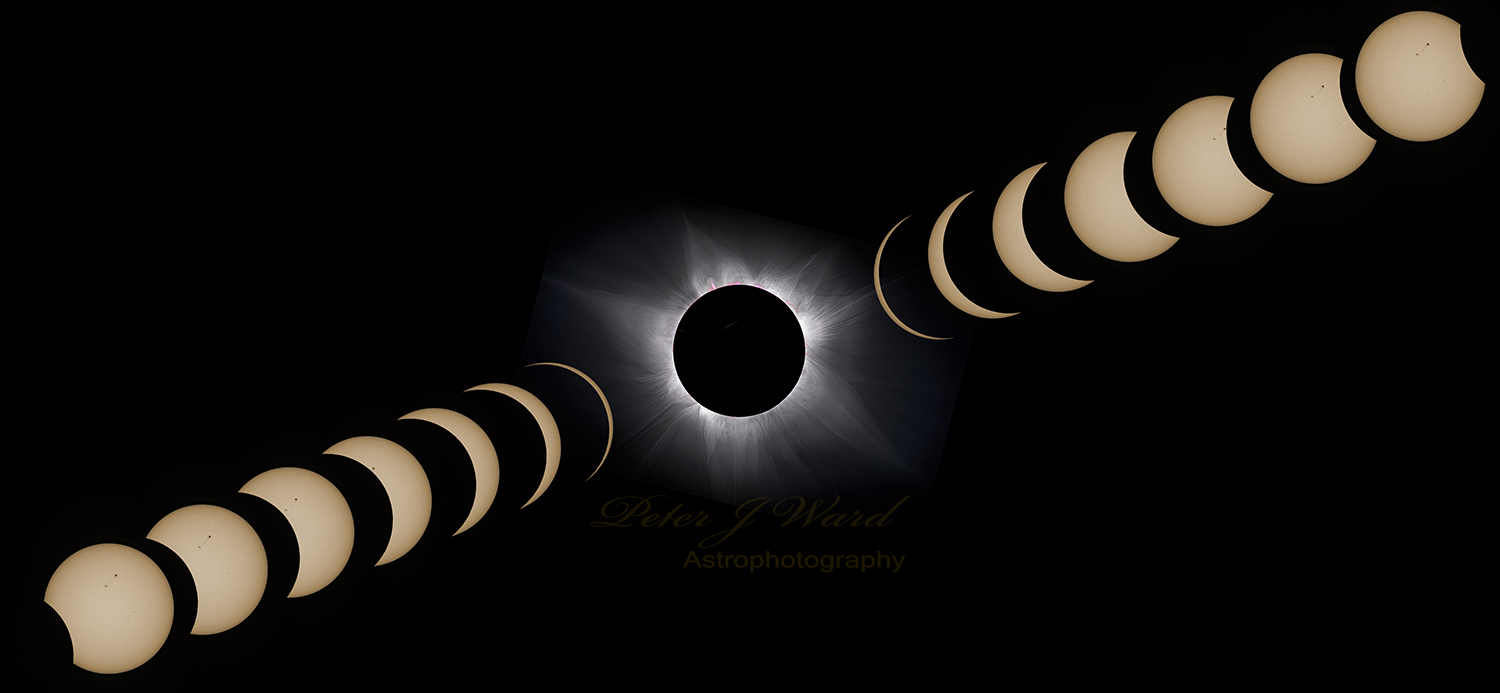
Above: While totality lasted a mere minute, entire eclipse took just over 3 hours
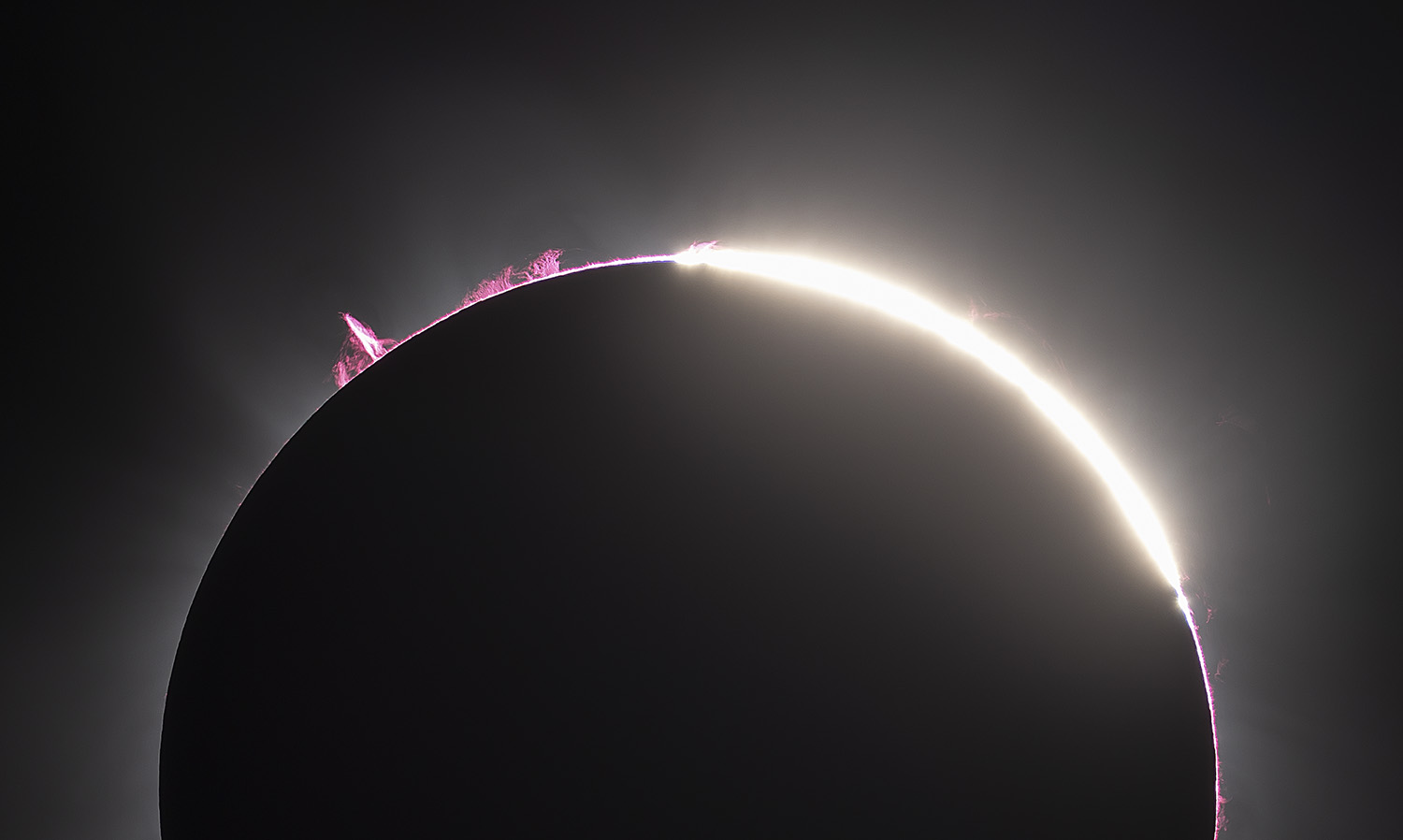
Sadly, Totality was all over in less than a minute. (AP155 EOSR5)
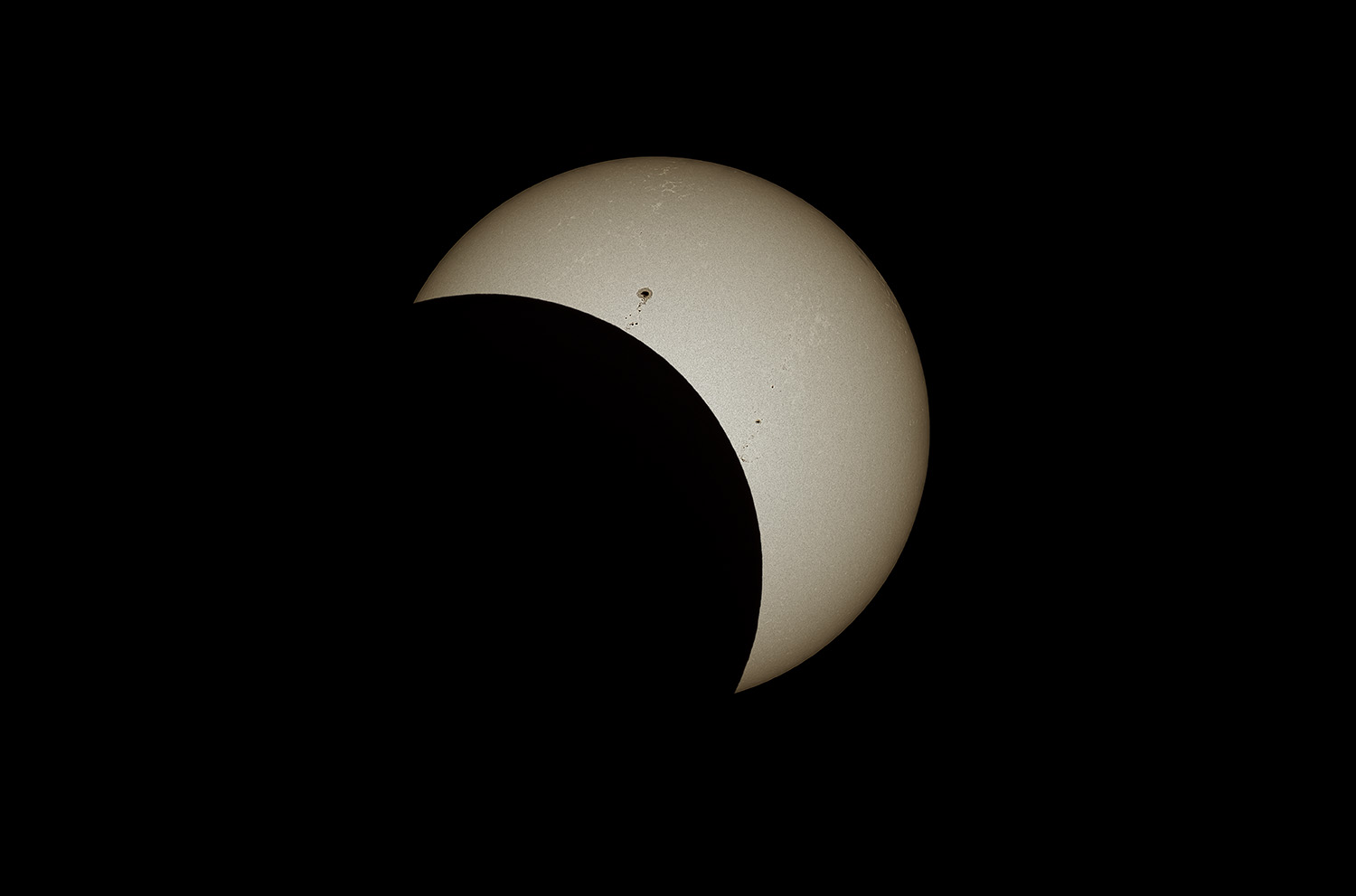
Hasta La Vista......
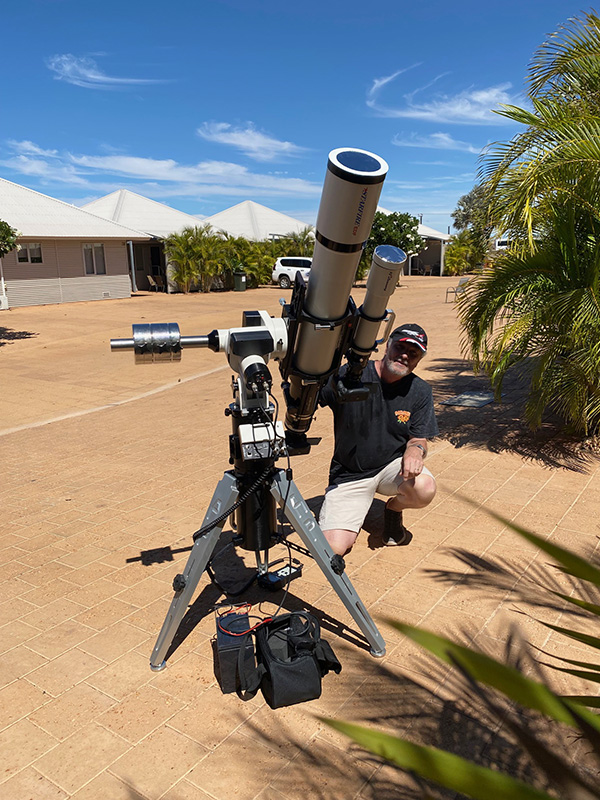
Above:
Author with Astro-Physics AP155
with 4" Field Flattener.
Astro-Physics 92 with FFC
Astro-Physics Mach2 + Eagle Pier
Canon EOSR5 (AP155)
Canon EOSRa (AP 92mm Stowaway)
Baader solar film.

All images and text Copyright Peter J Ward 2023
(unless otherwise noted )
No to be reproduced without permission.